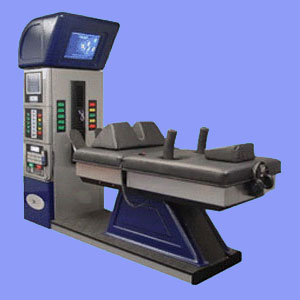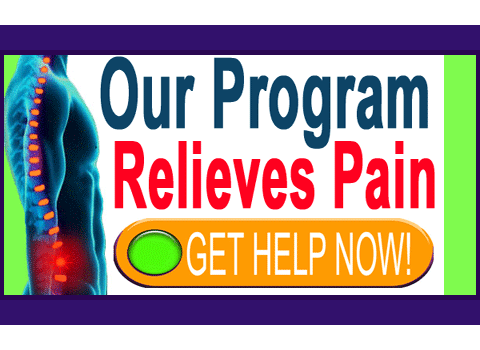
Spinal decompression for sciatica is an enlightened treatment option for sciatic nerve pain which is verifiably caused by certain structural spinal conditions, including most intervertebral disc pathologies. Spinal decompression has been used for thousands of years, but has been elevated to the forefront of sciatica treatment due to the effectiveness of modern computer-controlled devices.
This resource section provides a detailed look at noninvasive decompression for disc and bone-related sciatica conditions. We will profile the various methods of decompression and explain why this therapy is ideal for many patients who want to avoid spinal surgery.
What is Spinal Decompression for Sciatica?
Decompression therapy began millenia ago with such primitive modalities as inversion. Modern decompression is a non-surgical therapy option which is used to re-create lost intervertebral space, hopefully eliminating pain and associated neurological symptoms. Decompression works by gently stretching the spine, creating a vacuum effect which can restore disc height and even reduce the severity of bulging disc conditions.
Spinal decompression can be performed by both medical doctors and chiropractors and some care practitioners have devoted their entire practices to sciatic nerve decompression. This therapy is perhaps the fastest growing treatment in the entire back pain therapy industry. It should be noted that in some areas of the world, modern decompression systems are in short supply, so patients may have to travel to undergo care.
Spinal Decompression Options for Sciatica
Inversion is the oldest form of decompression therapy. In this practice, individuals literally hang upside down in an effort to counteract the effects of gravity on the spine. Inversion tables are still popular forms of primitive home-use decompression today.
Chiropractic adjustments involve some tractioning and decompression modalities, but Cox Technic, in particular, is an effective form of manual spinal decompression therapy. Chiropractic has extolled the virtues of decompression from the beginning of the system, with care providers always taking into account how the process can relieve a variety of disc-related pain syndromes.
There are many super high-tech machines which now perform state of the art computerized decompression, as well. The new machines offer a major advance over traditional bedridden traction for sciatica. Below are listed the most popular examples of modern decompression systems:
The VAX-D is one of the first to succeed in this medical treatment, while the DRX9000 and AccuSpina have enjoyed more recent accolades. Antalgic-Trak is a newer entry into the decompression treatment sector. The DRX9000 has especially enjoyed huge growth in the number and scope of doctors and chiropractors utilizing the device for treating numerous dorsopathy conditions very effectively worldwide.
Spinal Decompression for Sciatica Summary
I am an avid supporter of decompression for indicated structurally-induced back, neck and sciatica pain syndromes. Although the treatment is not useful for every spinal pain syndrome, it is indicated for the most common treatment-resistant conditions. The best treatment results are demonstrated in patients with herniated discs. Treatment is also indicated for degenerative disc disease and some forms of osteoarthritis, including facet joint syndrome.
The benefits of spinal decompression for sciatica treatment are easily recognized. First, it is noninvasive and offers a chance for realizing a real permanent cure. Next, the treatment is finite and typically lasts for about a month. This eliminates the long-term slavery commonly forced upon patients by other symptomatic sciatica treatments. Finally, the theory behind the therapy makes logical sense from a scientific anatomical viewpoint.
Remember, some chronic sciatica syndromes are not caused by a physical source, despite whatever the diagnosis might be. This is because many disc abnormalities are incidental to pain which may be present, since the disc does not influence any neurological tissue whatsoever.
Many of these types of back and leg pain syndromes are actually ischemic sciatica conditions and should be treated using knowledge therapy. Others might be sourced from disease processes, localized neuropathy or soft tissue conditions not related to any spinal issues.
However, for patients who are confident that the spinal structural theory of pain definitely applies to them, investigating spinal decompression is an excellent decision. The treatment is not cheap, but is well worth the cost for the millions of patients who have found lasting resolution of their sciatica symptoms without having the traverse the hazards of back surgery.





